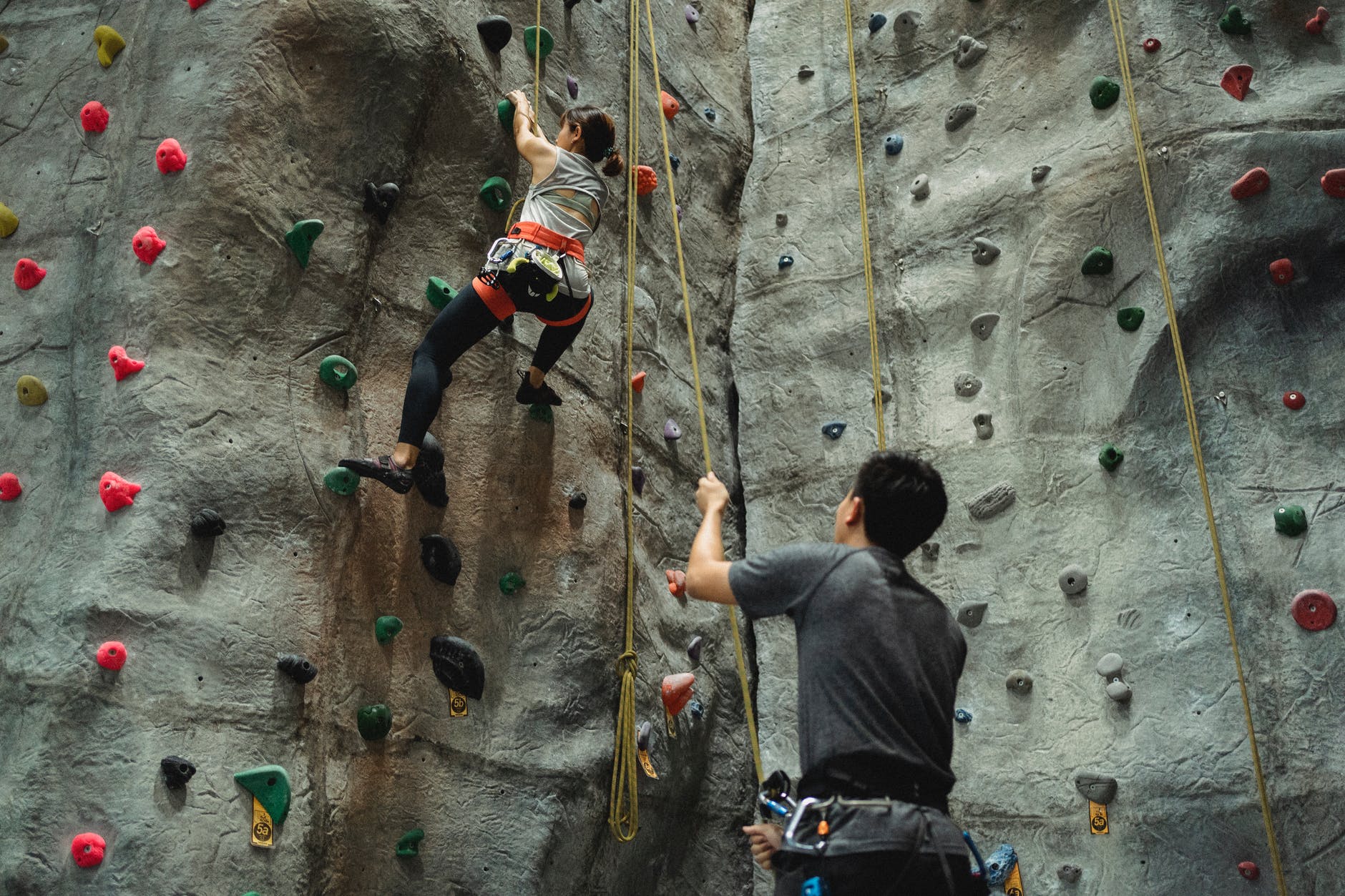Leading as a Belayer
In rock climbing, a belayer is a partner who stays on the ground holding the safety rope attached to the climber’s harness. It’s a simple metaphor, but one that I’ve found a lot of mileage in lately.
 (Photo by Allan Mas on Pexels.com)
(Photo by Allan Mas on Pexels.com)
There are 3 main things I draw from this metaphor:
- It’s the climber’s journey
- The role & responsibilities of leading
- It’s a supporting role
It’s the climber’s journey
They’re doing the work
It’s up to the climber to choose whether they want to climb and initiate the process. Something my professional coach asked me that was really illuminating is “what do you want from your career at this stage of your life?”. I like that framing because it highlights the temporal nature of the answer. It’s ok to go through times where your career takes a backseat to other things in your life – and it’s equally ok if you want to challenge yourself and invest more heavily in your career. The important part is that the climber you are leading identifies this for themselves. Your role as a belayer is to provide support for whatever they choose.
Iteration is an important part of the learning process! That means going up and down many times – finding success and then surprising setbacks all on the same wall.
If you pull a butterfly out of the cocoon, it won’t be able to fly. What we think to be struggle or friction, that pendulation of going back and forth, is really a necessary part of the learning process.
— Joe Hudson, Embarking on the Journey from the Art of Accomplishment Podcast
Something I try to keep in mind is that if you encourage someone to challenge themselves, and then they fall, they’re really just doing what you’ve asked. It’s all a part of the process.
A process cannot be understood by stopping it. Understanding must move with the flow of the process, must join it and flow with it.
— Frank Herbert, Dune
The role & responsibilities of leading
- To encourage – the impact of wholehearted, honest belief in another’s potential is surprisingly powerful.
- To coach – offering insight from your unique vantage point, which is different, and zoomed out from the perspective of the climber, who’s zoomed in doing the work.
- Neither vantage point offers a superior view, but each offers unique value. When combined, they provide a richer context of the landscape.
- There’s also an element of knowing when to be silent – allowing the climber to focus and do the work. Everything that is useful at the right dosage can be harmful at the wrong dosage.
- To create an environment of safety that allows failure to be ok.
- If you encourage someone to reach for a new hold, and they fall – it may be uncomfortable! You will feel their weight on the rope. They might be discouraged. They might even be angry. Your responsibility is to continue holding the rope. Let them feel that failure is ok – even safe. That safety you provide is what will allow them to come back and try again when they’re ready.
It’s a supporting role
And finally, it highlights that you’re not the main character in the story. Leading isn’t about ego – it’s not glamorous, or prestigious. It’s a minor character – one who’s added value is often overlooked, but whose contributions are also essential to the process.
It’s also a role that anyone can do, so long as they’re willing to take the responsibility seriously.
